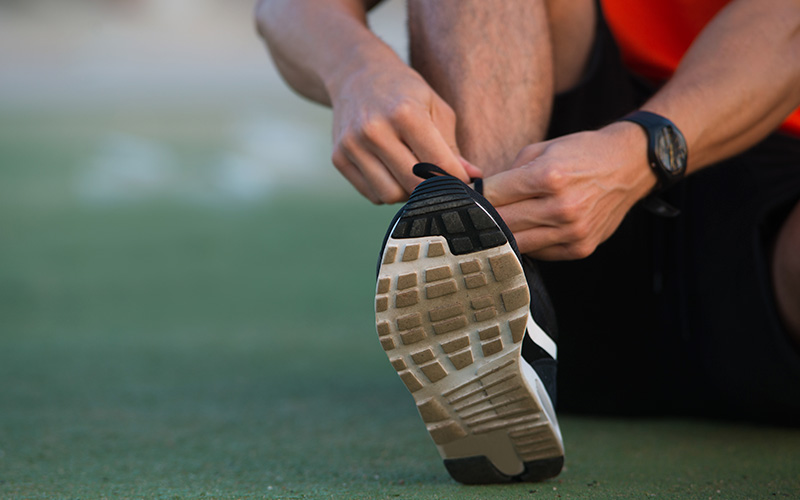What Doctor to See For Athlete’s Foot?
You’ve tried every over-the-counter cream and still can’t shake that annoying itch and burning between your toes. So now you’re wondering—what doctor should I see for athlete’s foot? The good news is that help is out there, and the right specialist can get your feet back to feeling healthy again. Whether it’s a dermatologist or a podiatrist, knowing who to see makes a big difference in treatment and recovery.
TL;DR:
If you’re dealing with athlete’s foot, you can visit a dermatologist for skin-focused care or a podiatrist (foot doctor) for issues that affect your feet or mobility. See a doctor for athlete’s foot if over-the-counter treatments haven’t worked after two weeks, or if you notice swelling, spreading infection, or complications like diabetes. During your visit, expect questions about your symptoms, a foot exam, and possibly lab tests. Getting timely medical care helps prevent complications and promotes faster healing.
Find relief with a foot specialist near Brooklyn. Book your appointment today!

Which Specialist Should I Visit for Athlete’s Foot?
If you suspect you have athlete’s foot (also called tinea pedis), two main specialists can help: dermatologists and podiatrists. Both can diagnose the infection, relieve symptoms, and help prevent it from coming back. You can also start by visiting your primary care doctor, who can refer you to the right expert based on your symptoms.
Dermatologist
A dermatologist specializes in skin conditions—including fungal infections like athlete’s foot. This doctor for athlete’s foot can confirm whether it’s truly a fungal infection or something else, like eczema or psoriasis, that looks similar. If needed, your dermatologist might take a skin culture to identify the exact fungus and prescribe targeted treatment.
When to See a Dermatologist:
- Your infection keeps coming back or doesn’t improve with drugstore creams
- The skin is red, swollen, painful, or spreading to other areas
- You have nail fungus or other complications that need special care
Podiatrist
A podiatrist, or foot doctor for athlete’s foot, focuses specifically on foot and ankle health. They treat fungal infections, structural problems, and skin issues affecting the feet. Because they understand how footwear, posture, and lifestyle affect foot health, podiatrists often take a holistic approach to treatment.
When to See a Podiatrist:
- The infection causes cracks, blisters, or pain when walking
- Your footwear or foot shape may be contributing to the issue
- You want expert advice on shoes, hygiene, or orthotics to prevent recurrence
Both specialists are qualified to treat athlete’s foot effectively. The right choice depends on your specific symptoms, medical history, and how severe the infection is. If you’re unsure, your primary care provider can help you decide.
Learn more about How to Get Rid of Corn on Foot
When to Seek Medical Help for Athlete’s Foot
Most mild cases of athlete’s foot improve with over-the-counter antifungal creams, sprays, or powders. But if the infection lingers or worsens, it’s time to see a doctor for athlete’s foot before it spreads or leads to complications.
You should seek medical care if:
- Symptoms haven’t improved after two weeks of treatment
- The infection keeps coming back
- You notice swelling, redness, or pus
- The infection spreads to your toenails or other parts of your body
- You have diabetes or another condition that affects circulation
- You’re pregnant and need safe treatment options
A healthcare provider may prescribe:
- Oral antifungal medications for infections that resist creams
- Antibiotics for secondary bacterial infections from scratching or cracked skin
- Prescription-strength antifungal creams for faster, more complete relief
Leaving athlete’s foot untreated can cause:
- Fungal spread to your nails or groin area
- Painful bacterial infections in broken skin
- Transmission to others through towels, shoes, or floors
Seeing a specialist early ensures you get effective care and avoid complications.
What to Expect During a Medical Consultation for Athlete’s Foot
Athlete’s foot, or tinea pedis, is a common foot infection. During a consultation, expect a systematic apWhen you visit an athlete’s foot doctor, you’ll go through a straightforward evaluation to confirm the diagnosis and start treatment.
Common Questions the Doctor May Ask:
- When did your symptoms start?
- How did the rash look in the beginning?
- Does it itch, burn, or cause pain?
- Have you tried any treatments already?
- Have you used public showers, pools, or locker rooms recently?
These details help your doctor pinpoint the cause and the best treatment plan.
Clinical Diagnosis
A diagnosis usually starts with a close look at the affected skin. The doctor may check for:
- Cracks, peeling, or scaling between toes
- Redness or blisters
- Dry or flaky patches on the sides or soles of the feet
If there’s any doubt, a small skin sample may be taken for lab analysis to confirm a fungal infection and rule out other conditions like psoriasis or contact dermatitis.
Preparing for Your Appointment:
To make your visit smooth and productive, bring a quick overview of your symptoms and questions you want answered, such as:
- What’s the most likely cause of my symptoms?
- Do I need any tests to confirm the diagnosis?
- What treatments work best for my case?
- How can I stop athlete’s foot from coming back?
Following your doctor’s recommendations—and keeping your feet clean and dry—helps speed up recovery and prevent future infections.
Learn more about is podiatry covered by insurance
Taking the Right Step Toward Healthy Feet
Healthy feet are essential for daily comfort and movement. Recognizing the signs of athlete’s foot early and getting help from a qualified foot doctor for athlete’s foot ensures quicker healing and fewer complications.
Proper treatment not only clears up the infection but also prevents it from spreading to your toenails or other areas. Keep your feet dry, wear breathable shoes, and practice good hygiene to protect against recurrence. Acting fast when symptoms appear can make all the difference in your recovery.
Conclusion
Early diagnosis and care from the right athlete’s foot doctor—whether a dermatologist or a podiatrist—can stop the infection in its tracks. With professional treatment, proper hygiene, and smart foot habits, you can heal faster and keep your feet healthy for the long run.
Don’t wait for athlete’s foot to slow you down. Reach out to a foot doctor for athlete’s foot near you and take the first step toward relief today.
Key Takeaways: What Doctor to See for Athlete’s Foot
- Specialists to Consult
- Dermatologists: Experts in skin conditions, can diagnose and treat athlete’s foot and differentiate it from similar issues (e.g., eczema).
- Podiatrists: Foot specialists who address infections and contributing factors like footwear and foot structure.
- When to See a Dermatologist
- Persistent or recurrent infections not responding to OTC treatments
- Severe symptoms (e.g., swelling, pain, spreading infection)
- Complications like nail involvement
- When to See a Podiatrist
- Infection linked to structural foot issues or improper footwear
- Pain, blisters, or deep cracks affecting mobility
- Need for guidance on foot care or orthotics to prevent recurrence
- When to Seek Medical Attention
- No improvement after 2 weeks of OTC antifungals
- Frequent recurrences or spreading infection
- Signs of severe infection (pus, swelling, fever)
- Increased risk due to conditions like diabetes or pregnancy
- Treatment Options
- Prescription-strength topical creams
- Oral antifungal medications for resistant cases
- Antibiotics if secondary bacterial infections occur
- Medical Consultation Process
- Includes symptom history, physical exam, and possibly lab tests (e.g., skin scraping)
- Questions may cover symptom duration, exposure to communal areas, and factors worsening the condition
- Preparation for Your Appointment
- Bring a symptom timeline and list of questions
- Ask about diagnosis, treatment options, and prevention strategies
- Complications of Untreated Athlete’s Foot
- Spread to nails or other body areas (e.g., groin)
- Secondary bacterial infections
- Transmission to others through shared items
- Prevention and Maintenance
- Maintain good foot hygiene
- Wear breathable, properly fitted footwear
- Act promptly at the first sign of symptoms to avoid worsening
- Conclusion
- Early recognition and specialist care help manage athlete’s foot effectively and prevent complications.
- Dermatologists and podiatrists offer targeted treatment based on the condition’s cause and severity.
Sources:
- Homei, A., & Worboys, M. (2013). Athlete’s Foot: A Disease of Fitness and Hygiene. In Fungal Disease in Britain and the United States 1850–2000. Springer Nature.
- Sroka, C. B. (1956). Athlete’s Foot. British Medical Journal, 2(4989), 420.
